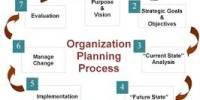Introduction:
The CAMELS Rating is a US supervisory rating of the bank’s overall condition used to classify the nation’s fewer than 8,000 banks. This rating is based on financial statements of the bank and on-site examination by regulators like the Fed, the OCC and FDIC. The scale is from 1 to 5 with 1 being strongest and 5 being weakest. These ratings are not released to the public but only to the top management of the banking company to prevent a bank run on a bank which has a bad CAMELS rating.
Performance indicators of the banking industry depict a trend similar to that of the state-owned banks, which is understandable due to their predominant market share. CAMELS ratings indicate that financial performance of the PCBs and FCBs in general has been better than that of the industry average. Any bank rated 4 or 5 i.e., ‘Marginal’ or ‘Unsatisfactory’ under composite CAMELS rating is generally identified as a Problem Bank. Activities of the problem banks are closely monitored by the Central Bank. Bangladesh Bank issues directives from time to time to the problem banks to bring them in good shape. After the assessment under CAMELS rating, The City bank Limited is rated 3 or Fair.
The components of a bank’s condition that are assessed:
(C) Capital adequacy
(A) Asset quality
(M) Management
(E) Earnings
(L) Liquidity
(S) Sensitivity to market risk
Capital Adequacy:
Capital adequacy is a bank regulation, which sets a framework on how banks and depository institutions must handle their capital. The categorization of assets and capital is highly standardized so that it can be risk weighted. Internationally, the Basel Committee on Banking Supervision housed at the Bank for International Settlements influence each country’s banking capital requirements. In 1988, the Committee decided to introduce a capital measurement system commonly referred to as the Basel Accord. This framework is now being replaced by a new and significantly more complex capital adequacy framework commonly known as Basel II. While Basel II significantly alters the calculation of the risk weights, it leaves alone the calculation of the capital. The capital ratio is the percentage of a bank’s capital to its risk-weighted assets. Weights are defined by risk-sensitivity ratios whose calculation is dictated under the relevant Accord.
To be adequately capitalized under federal bank regulatory agency definitions, a bank holding company must have a Tier 1 capital ratio of at least 4%, a combined Tier 1 and Tier 2 capital ratio of at least 8%, and a leverage ratio of at least 4%, and not be subject to a directive, order, or written agreement to meet and maintain specific capital levels.
Elements of Capital Adequacy:
1. Regulatory Capital
Tier 1 (Core) Capital
Tier 2 (Supplementary) Capital
Undisclosed Reserves
Revaluation Reserves
General Provisions
Subordinated Term Debt
2. Common Capital Ratios
Capital Adequacy of The City Bank Ltd (CBL) is given below:
Table 13: Regulatory capital to meet unforeseen Capital
| Particulars Amount In CroreAmount of regulatory capital to meet unforeseen Capital:
|
Capital Adequacy of The City Bank Ltd (CBL) is given below:
The Capital Condition of CBL
Table14: The Capital Condition of CBL ( Figure in Crore)
Particulars | 2009 Taka | 2008 Taka | |
| Tier-1 (Core Capital) | |||
| Paid up CapitalStatutory reserve General Reserve Retained earnings as per profit and loss a/c | 157.11 137.74 1.14 57.52 | 136.62 109.98 1.14 23.34 | |
353.51 | 271.08 | ||
| Tier-II (Supplementary Capital) | |||
| General Provision against UC loanGeneral Provision against Off-B/S items Asset revaluation reserve Exchange equalization account Revaluation reserve for HTM securities | 79.92 10.92 69.18 1.69 0.75 | 42.02 10.92 69.46 1.69 0.18 | |
162.46 | 124.27 | ||
A. Total Capital | 515.97 | 395.35 | |
B. Total Risk Weighted Assets | 4571.45 | 3591.89 | |
| C. Required Capital based on Risk Weighted Assets (10% of B) | 457.15 | 359.19 | |
D. Surplus (A-C) | 58.83 | 36.16 | |
The Graphical Presentation is given below:

The Capital adequacy Ratio of CBL:
Table 15: The Capital adequacy Ratio
| Required | Actual | |||
2009 | 2008 | |||
| On Core Capital (Tier-I)On Supplementary Capital(Tier-II) | 5.00%5.00% | 7.73% 3.56% | 7.55% 3.46% | |
| On Total Capital | 10.0% | 11.29% | 11.01% | |
The Graphical Presentation is given below:

Asset quality:
It is related to the left-hand side of the bank balance sheet. Bank managers are concerned with the quality of their loans since that provides earnings for the bank. Loan quality and asset quality are two terms with basically the same meaning.
Government bonds and T-bills are considered as good quality loans whereas junk bonds, corporate credits to low credit score firms etc. are bad quality loans. A bad quality loan has a higher probability of becoming a non-performing loan with no return. The ratio of non-performing loans in Japan is expected to be as high as 25% of the overall bank assets.
Bank management components are:
Asset management
Liquidity management
Liability management
Capital adequacy management
Risk management
The Asset Quality of CBL:
Table 16: Classification of loans and advances
| Particulars | 2009 Taka | 2008 Taka |
| Classification of loans and advances / investments | ||
| UnclassifiedStandard including staff loan Special Mention Accounts (SMA) | 40,054,822,803 1,314,637,000 | 31,745,159,980 505,977,000 |
41,369,459,803 | 32,251,136,980 | |
| ClassifiedSub-standard Doubtful Bad/Loss | 231,832,000 400,577,000 1,484,553,000 | 286,730,000 461,788,000 1,421,290,000 |
2,116,962,000 | 2,169,808,000 | |
| Total | 43,486,421,803 | 34,420,944,980 |
Management:
Management in all business areas and organizational activities are the acts of getting people together to accomplish desired goals and objectives. Management comprises planning, organizing, staffing, leading or directing, and controlling an organization (a group of one or more people or entities) or effort for the purpose of accomplishing a goal. Resourcing encompasses the deployment and manipulation of human resources, financial resources, technological resources, and natural resources.
Because organizations can be viewed as systems, management can also be defined as human action, including design, to facilitate the production of useful outcomes from a system. This view opens the opportunity to ‘manage’ oneself, a pre-requisite to attempting to manage others. Management can also refer to the person or people who perform the act(s) of management. In CBL, the Board of Directors has been conceived as the sources of all power headed by its Chairman. It is a legislative body of the Bank. Board can delegate its power and authority to professionals but cannot delegate, relinquish or avoid their responsibilities.
Table 17: Board of Directors
| Aziz Al Kaiser | Chairman |
| Hossain Mehmood | Vice Chairman |
| Rubel Aziz | Director |
| Evana Fahmida Mohammad | Director |
| Hossain Khaled Saifullah | Director |
| Rajibul Huq Chowdhury | Director |
| Ahmed Rajeeb Samdani | Director |
| Tabassum Kaiser | Director |
| Rafiqul Islam Khan | Director |
| Meherun Haque | Director |
| Mobarak Ali | Director |
| K Mahmood Sattar | Managing Director & CEO |
So we can see that the top management of CBL is full of so much experience person in banking sector and they can eligible enough to fulfill the top-level management duties.
In CBL, The Board delegates its functional responsibilities of the professional management team headed by managing Director. He is an ex-officio of the Board of Directors and has to take the full load of carrying out of the guidelines, rules and regulations and Directors given by the Board of Directors time to time and provide all vital information to this Board for their knowledge and effective decision-making.
Table 18: Number of Employees
Year | No of Employees |
2005 | 1,829 |
2006 | 1,989 |
2007 | 1,991 |
2008 | 2,134 |
2009 | 2,424 |
Table 19: Operating profit per employee
| Particulars | 2005 | 2006 | 2007 | 2008 | 2009 | |
| Operating profit per employee | 0.68 | 0.75 | 0.63 | 0.82 | 0.93 |
The Graphical Presentation is given below:

Table 20: Total Operating Income per employee
| Particulars | 2005 | 2006 | 2007 | 2008 | 2009 |
| TotalOperating Income per employee | 1.15 | 1.33 | 1.29 | 1.58 | 1.80 |
The Graphical Presentation is given below:

Income or Earnings:
Income is the consumption and savings opportunity gained by an entity within a specified time frame, which is generally expressed in monetary terms. However, for households and individuals, income is the sum of all the wages, salaries, profits, interests’ payments, rents and other forms of earnings received in a given period of time. For firms, income generally refers to net-profit, what remains of revenue after expenses have been subtracted. In the field of public economics, it may refer to the accumulation of both monetary and non-monetary consumption ability, the former being used as a proxy for total income.
Economic definitions:
In economics, factor income is the flow of revenue accruing to a person or nation from labor services and from ownership of land and capital. In consumer theory ‘income’ is another name for the “budget constraint,” an amount Y to be spent on different goods x and y in quantities x and y at prices Px and Py.
This equation implies two things. First buying one more unit of good x implies buying less units of good y. So, is the relative price of a unit of x as to the number of units given up in y. Second, if the price of x falls for a fixed Y, then its relative price falls. The usual hypothesis is that the quantity demanded of x would increase at the lower price, the law of demand. The generalization to more than two goods consists of modeling y as a composite good.
The theoretical generalization to more than one period is a multi-period wealth and income constraint. For example the same person can gain more productive skills or acquire more productive income-earning assets to earn a higher income. In the multi-period case, something might also happen to the economy beyond the control of the individual to reduce (or increase) the flow of income. Changing measured income and its relation to consumption over time might be modeled accordingly, such as in the permanent income hypothesis.
Various income of CBL in 2009 is shown below (Amounts in million)

Besides, some other income of CBL is shown below:
Table 21: Income of CBL
| Particulars | 2009 | 2008 |
Million | Million | |
| Return on Assets (ROA) |
Earnings per Share (EPS)
Net Assets Value Per Share
Market liquidity:
In business, economics or investment, market liquidity is an asset’s ability to be sold without causing a significant movement in the price and with minimum loss of value. Money, or cash on hand, is the most liquid asset. An act of exchange of a less liquid asset with a more liquid asset is called liquidation. Liquidity also refers both to a business’s ability to meet its payment obligations, in terms of possessing sufficient liquid assets, and to such assets themselves.
In Banking:
In banking, liquidity is the ability to meet obligations when they come due without incurring unacceptable losses. Managing liquidity is a daily process requiring bankers to monitor and project cash flows to ensure adequate liquidity is maintained. Maintaining a balance between short-term assets and short-term liabilities is critical. For an individual bank, clients’ deposits are its primary liabilities, whereas reserves and loans are its primary assets . The investment portfolio represents a smaller portion of assets, and serves as the primary source of liquidity. Investment securities can be liquidated to satisfy deposit withdrawals and increased loan demand. Banks have several additional options for generating liquidity, such as selling loans, borrowing from other banks, borrowing from a central bank, such as the US Federal Reserve bank, and raising additional capital. In a worst case scenario, depositors may demand their funds when the bank is unable to generate adequate cash without incurring substantial financial losses. In severe cases, this may result in a bank run. Most banks are subject to legally-mandated requirements intended to help banks avoid a liquidity crisis.
Cash Reserve Requirement (CRR) and Statutory Liquidity Ratio (SLR) of CBL:
Cash Reserve Requirement and Statutory Liquidity Ratio have been calculated and maintained in accordance with section 33 of Bank Companies Act, 1991 and as per BRPD circular no. 11 and 12, dated August 25, 2005 and DOS circular no. 6 dated October 05, 2005.
The Cash Reserve Requirement on the Bank’s time and demand liabilities at the rate of 5% has been calculated and maintained with Bangladesh Bank in current account and 18% Statutory Liquidity Ratio, including CRR, on the same liabilities has also been maintained in the form of treasury bills, bonds & debentures including FC balance with Bangladesh Bank. Both the reserve maintained by CBL is in excess of the statutory requirements, as shown below:
Liquidity Condition of CBL:
a. Cash Reserve Requirement
Table 22: Cash Reserve Requirement
| Particulars | 2009 (Taka) | 2008 (Taka) |
| Required Reserve (5% of average time and demand liabilities) |
b. Statutory Liquidity Ratio
Table 23: Statutory Liquidity Ratio
| Particulars | 2009 (Taka) | 2008 (Taka) |
| Required Reserve (18% of average time and demand liabilities) |
Actual Average maintained (including CRR)
Liquidity Statement of CBL:
Liquidity Statement
As at 31st December 2009 (Figure in BDT
Table 24: Liquidity Statement
| Particulars | Total |
| ASSETS |
Cash in hand
Balance with BB and agent
Balance with other bank
Money at call and short
Investments
Loans and Advances
Fixed Assets
Other Assets
Non-banking assets
Sensitivity to market risk:
Market risk is defined as a current or prospective threat to the Bank’s earnings and capital due to movements in market prices, i.e. prices of securities, commodities, interest rates & foreign exchange rates.
CBL addresses Market Risk through standardized approach as per direction of Bangladesh bank. It is the risk that the value of on and off-balance sheet positions will be adversely affected movements in market rates or prices such as interest rates, foreign exchange rates, equity prices, credit spreads and commodity prices resulting in a loss to earnings and capital.
CBL calculates market risk for three components, namely interest rate risk, equity position risk and foreign exchange risk. CBL does not deal with commodity. Under standardized approach both specific and general market risk are calculated for interest rate related instruments and equity holding. Presently CBL does not deal with SWAP or derivative instruments.
Interest Rate Risk:
Interest rate risk arises when there is a mismatch between positions, which are subject to interest rate adjustment within a specific period. CBL has developed VAR and Stress Testing to assess and manage the interest rate risk and its adverse impact on balance sheet as well as on profitability.
Foreign Rate Risk:
It is the current or prospective risk to earnings and capital arising from adverse movements in currency exchange rates. It refers to the impact of adverse movement in currency exchange rates on the value of open foreign currency position. To manage the risk, CBL has taken the following initiatives:
CBL has formed Asset Liability Committee (ALCO)
Separated Back office and Front office
Hire expect dealing officers
Measures risk to NII regularly
Measures risk to economic of value
Earning at Risk and
Value at Risk (VAR)
Equity Price Risk: It is risk to earnings or capital that results from adverse changes in the value of equity related portfolios of a financial institution. CBL has deployed a team to manage equity position risk. Beside these, CBL use VAR and Stress Test for measuring the impact of market movement of stock price as well as capital adequacy of CBL.
Table 25: The Capital Requirements for Market Risk
| The Capital Requirements for |
Market Risk
- Interest rate risk
- Equity position risk
- Foreign exchange risk
- BDT in million
The Graphical Presentation is given below:

















